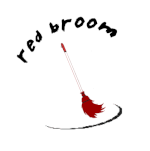brain research and change
As long as we have been trying to improve the quality of children’s experiences in child care, with limited success, we should be looking in every corner for insight and inspiration. Here is some that I have encountered in a few places, most recently in the BUILD archives, that specifically addresses some of the specific barriers that we don’t, in my opinion, talk about enough.
SCARF is an acronym that identifies issues to which the brain reacts with an approach or avoid response. ” Status is about relative importance to others. Certainty concerns being able to predict the future. Autonomy provides a sense of control over events. Relatedness is a sense of safety with others, of friend rather than foe. And fairness is a perception of fair exchanges between people”.
https://qrisnetwork.org/sites/default/files/materials/SCARF%20A%20Brain-based%20Model%20for%20Collaborating%20with%20and%20Influencing%20Others.pdf
Status – don’t you think this is a sensitive one for child care teachers (especially if they see themselves as “day care workers”)? Needing “improvement” tacitly implies that you are not very good at what you are doing. It takes a strong secure professional self regard to take on being “improved” especially when the national average is still 10.72 an hour! (Early Childhood Workforce Index 2018, Center for the Study of Child Care Employment, University of California, Berkeley).
Certainty is another fragile element for an early childhood teacher. She/He doesnt have some of the basic controls to feel as if they are in charge of their environment or work. Will lunch be on time? Will the director lay off teachers as children disenroll? Somewhat offset by the benefits routines in child care, certainty is at odds with the constant need to be flexible when spending time with young children.
Autonomy. Do early childhood teachers have control over their workspace and activities? In good programs they do, but the attempts to regulate to quality can begin to erode teachers’ ability to individualize activities (approved curricula) and room arrangements (ERS scores). Can we go outside whenever we want? When a lack of standards gave everyone a free-for-all of autonomy, we created a system of less-than-good child care. How do we walk both sides of this line?
Relatedness. Well, we already know that children need relationships and now we are thinking about the importance of relationships for their teachers. This is not a surprise to anyone working in child care improvement. Trust, charm, persuasive and supportive strategies are key to professional development and coaching. For me this is the leverage to argue for small case loads for quality improvement projects, for funds to pay for time to build relationships in meetings outside of classroom time. And lets not be naive about the impact of bias in this precarious sensitive relationship and the power dynamics at play. The crux of I would argue that all these elements of this model are dependent relatedness.
Fairness. Hhhmm.. no quantitative measures for this element! Pretty subjective! Are child care programs “fair” when teachers earn less than a living wage? No matter how dedicated a teacher, she/he knows that discrepancy is a reflection on the value placed on their work by society. Paid staff meetings and work days? Health insurance? Its actually amazing to me that ece teachers still go to work and nurture and educate young children in the face of this blatant disrespect.
So if we use this information to design quality improvement programs, what will that look like? A radical investments in relationships from top to bottom, but one that this model strongly suggests will result in better results at inspiring and sustaining change in the quality of teacher and director practices.
Since we have tried the “low hanging fruit”, with limited success, can we follow this good research to the needed priorities?
